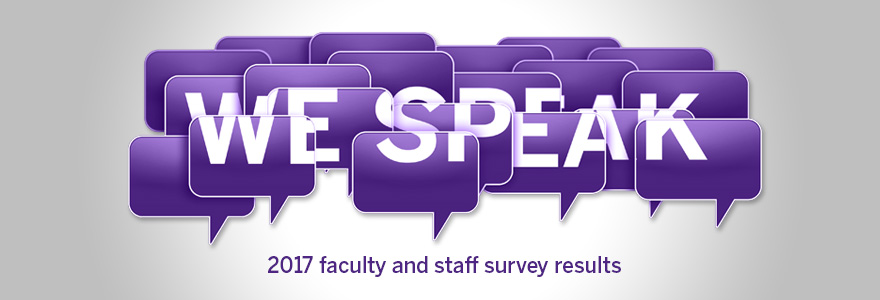We Speak 2017

Background
The We Speak Survey process, held in January and February 2017, was designed to provide faculty and staff with an opportunity to express their views about their day-to-day work experience at Western University. Their input has helped to identify what is working well, and where there is opportunity for improvement by measuring workplace culture and employee engagement across Western.
This was the second of two surveys completed at Western, with the first taking place in 2012.
Following the 2012 Survey, Schulich Medicine & Dentistry made a major commitment to address those areas identified in the 2012 Survey as requiring increased attention.
Through focus groups, individual meetings and town halls, faculty and staff shared their feedback on the survey results, and an action plan was created.
Through the guidance of the We Act Committee and the School’s leadership, programs and departments worked on areas of the greatest concern to them with a goal to see enhanced results in the 2017 Survey.
Results from We Speak 2017
Western University
Response rates at Western University overall have increased since the 2012 survey. Almost 4,000 Western faculty and staff members took part in the survey with a response rate that increased from approximately 40 per cent to 45 per cent from 2012 to 2017. Full-time staff had a 78 per cent response rate and full-time faculty had a 44 per cent response rate. The overall part-time faculty and staff response rate was 24.9 per cent.
Western had notably high Organizational Engagement scores at 74.2 per cent, compared to the Metrics@Work database average of 69.3 per cent and the postsecondary sector database of 69.1 per cent.
Overall with the Western results, Organizational Engagement and Faculty/Division Engagement scores are slightly lower than 2012, while Work Engagement is slightly higher. In general, staff responses reflect higher levels of Organizational Engagement and faculty responses show higher levels in Work Engagement.
Schulich Medicine & Dentistry
Overall response rates increased at Schulich Medicine & Dentistry, with 27.3 per cent completing the survey compared to 21.85 per cent in 2012. Breaking this down, the faculty response rate was 17.6 per cent up from 9 per cent in 2012. The staff response rate was 54 per cent up from 48 per cent in 2012.
We are grateful to everyone who helped to build awareness about the survey in their Departments and the Divisions and believe it is because of their support that our response rate has increased.
You can review all the high level results for Schulich Medicine & Dentistry through this PowerPoint presentation.
We are pleased to see that the efforts as part of We Act at Schulich Medicine & Dentistry has made a positive impact in terms of response rates and drivers. The We Act Committee at the School will continue to work with all departments to ensure they have the resources and supports in place to meet their goals resulting from their survey discussions.
Next Steps
The School’s leadership has received and reviewed all the results from the survey. They have confirmed the continuance of the We Act Committee and added new members representing programs and departments from across the School.
A presentation providing overall results for the School was made to Chairs, Chair/Chiefs and Directors on June 2.
Faculty and staff across the School will receive news about the School’s overall results through a Dean’s Video Newsletter. Department leaders will receive information about an orientation to assist with sharing results.
A number of tools have been created for departments to access to assist with their discussions and presentations. These include cover memos, power point presentations and agenda templates. Departments are also encouraged to share the Dean’s Video Newsletter during their meetings. All resources can be found on this web page.
Departments, divisions and programs will all receive their results and will be asked to share the results with their faculty and staff. Following review of your individual results with your teams, each department, division and program will be asked to identify one to three specific areas of focus and during the next year, develop a plan which will address concerns raised in the potential areas of weakness.
This plan is to be provided to the We Act Team by November 2017, with outcome from the plan to be provided by April 15, 2018.
The We Act Committee will continue to support and monitor departmental action plans.








